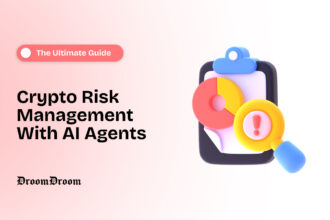Blockchain infrastructure is an important facility that enables the smooth running of networks in Blockchain technology. A Blockchain network is a decentralized technology, which means no government authority controls how the system works. Therefore, Blockchain infrastructure enables institutions with decentralized applications to eliminate the use of third parties and centralized authority to access services or run the system.
Blockchain infrastructure ensures the effective running of Blockchain technology, it maintains and provides Blockchain technology with the infrastructure that is needed to operate and ruin the Blockchain system.
Deploying Blockchain infrastructure is therefore much more important to the system, the running of Blockchain needs nodes to enhance the effective run of Blockchain technology. Nodes are used in Blockchain technology to verify transactions and distribute data and decentralized storage. Therefore, the implementation of an effective Blockchain infrastructure is necessary.
Blockchain Infrastructure
Blockchain infrastructure is a component that facilitates better functionality of Blockchain technology, there are certain features like nodes, smart contracts, consensus mechanisms and wallets. Each of these Blockchain infrastructures is used in different parts, for example, smart contracts, it is a self-executing contract that are directly written in codes. There are challenges that Blockchain technology faces, so what are these challenges?
Challenges In Blockchain Infrastructure
In this section, we will be looking at some of the challenges that these infrastructures are facing.
Scalability
Transaction and validation of blocks in Blockchain have increased. Recently, Blockchain technology has witnessed an increasing engagement in the network, but however, scalability has become a great issue for Blockchain. It takes a day or a few hours to create a node in Blockchain. Scalability is the ability of Blockchain technology to handle a vast amount of transactions, there are a huge number of transactions that happen in the Blockchain network. Scalability poses a threat in Blockchain infrastructure since it makes transaction and validation of Blocks slow and tedious. Additionally, when the number of transactions and validation are slow, an increase in cost happens in Blockchain infrastructure.
Privacy and Security
Blockchain technology is increasingly raising concerns among investors and individuals alike. Blockchain supports transaction and validation of cryptocurrencies, but of late security has been a threat to individual’s assets. Security is one of the greatest concerns in Blockchain infrastructure, investors’ assets are in trouble due to scammers, hacks and theft. Blockchain infrastructure needs robust security measures, for instance, the vulnerability in smart contracts.
Smart contracts are self-executing contracts with the terms of agreement that are written directly in codes. However, smart contracts are vulnerable, this can lead to security breaches and financial losses. Moreover, privacy is also an issue pertaining to Blockchain infrastructure, transparency is necessary in Blockchain, especially during transactions, but once a transaction is made in Blockchain it is visible to all participants in Blockchain. This poses a threat to user’s data privacy.
User Experience
Cryptocurrency and Blockchain technology are revolutionizing the financial industry and UX developers have a crucial responsibility in enhancing UX in Blockchain infrastructure. But, this poses a pivotal disadvantage in Blockchain infrastructure. Blockchain is complex and new users might find it challenging to invest in these digital coins.
For instance, a transaction is complex, sending and receiving crypto needs a high level of trust from the sender and recipient. Moreover, managing private keys is complex. There are two types of keys that are required to validate transactions: private keys and public keys. New users might find these challenging, storing these keys is hard and complex. Moreover, if these keys are lost, they cannot be replaced. This is an issue with Blockchain infrastructure.
Regulations And Interoperability
Another problem facing Blockchain infrastructure is regulations, the Security Exchange Commission is a threat to Blockchain technology. Blockchain technology is however decentralized, which makes it hard to comply with the SEC regulation. Besides, Blockchain technology must comply with security measures in different regions. It becomes harder for Blockchain infrastructure to be decentralized while at the same time following centralized regulations. Additionally, interoperability has been a threat to Blockchain infrastructure, Blockchain is figuring out how to work and communicate together with different Blockchain networks. This poses a threat to Blockchain technology and Blockchain infrastructure.
Solutions To Blockchain Infrastructure
Scalability is a threat to Blockchain infra., achieving scalability is a primary solution in creating mass adaptation and faster huge transactions between users. Therefore there are various solutions to cubbing scalability. Foremost is sharding, sharding is the process of dividing Blocks into smaller parts called shards. Shards are easily manageable since they eliminate the dependency concerns about the speed of individual nodes during transactions. It catalyzes faster transactions during the huge amount of transactions in Blockchain technology.
Moreover, improving security in the Blockchain network is another solution to Blockchain infrastructure. Security is a primary concern, and transparency during transactions are necessary. This ensures that user’s data are acquired by just any individual. Additionally, nodes are used to emphasize transactions, therefore nodes require efficient security so as not to be easily accessed by hackers and scammers.
Moreover, developers should emphasize end-to-end encryption, this provides double security in the Blockchain network. Providing two-factor authentication security will also ensure scammers and hackers are far away from an individual’s digital assets, two-factor authentication ensures if one of the private keys is lost, individuals have a backup key to get access to the digital asset.
Conclusions
Blockchain infrastructure is necessary for effective functionality in Blockchain technology, but there are challenges to it. Developers however have come up with solutions to curb these troubles like scalability, security concerns and regulations. Ensuring security in Blockchain infrastructure will secure individual threats and Blockchain vulnerabilities.
















